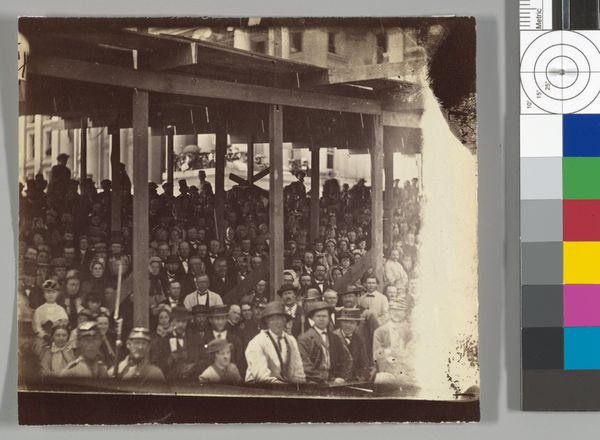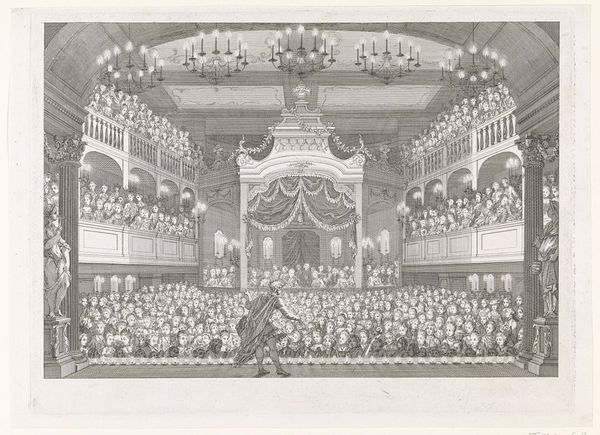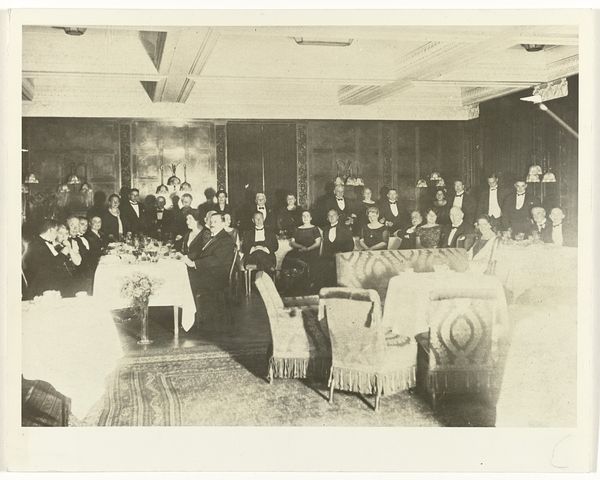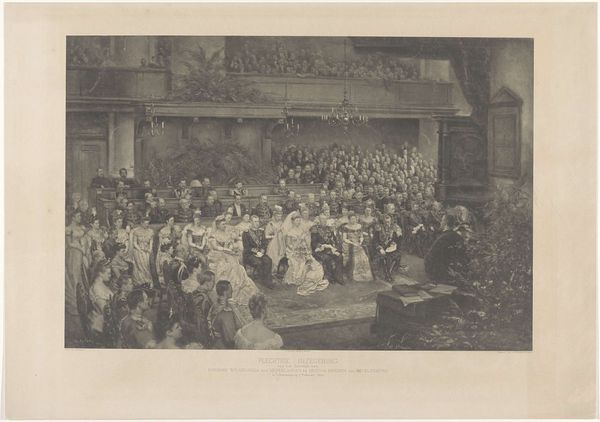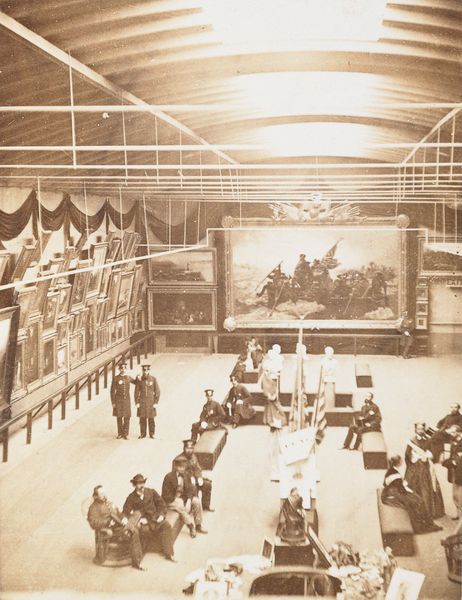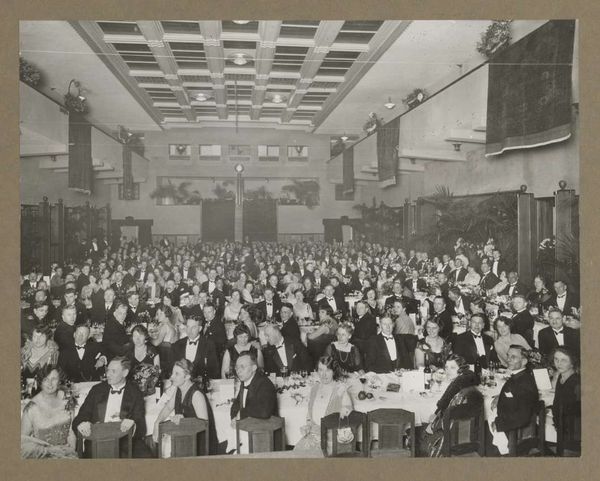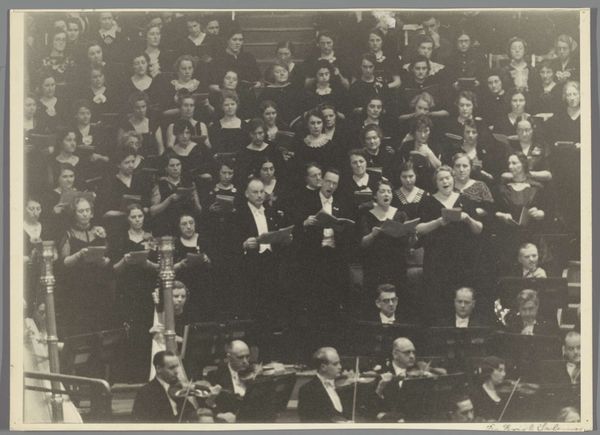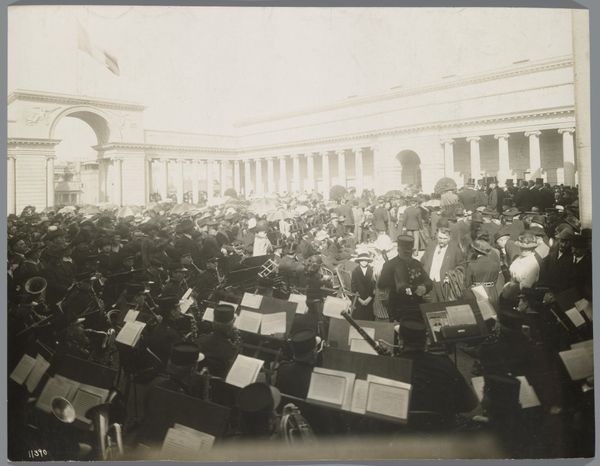
Huwelijksvoltrekking tussen Koningin Wilhelmina en prins Hendrik in de Grote Kerk te Den Haag Possibly 1901 - 1907
0:00
0:00
hermandeutmann
Rijksmuseum
photography, gelatin-silver-print
#
portrait
#
wedding photography
#
archive photography
#
photography
#
historical photography
#
gelatin-silver-print
#
19th century
#
history-painting
Dimensions: height 227 mm, width 293 mm, height 340 mm, width 431 mm
Copyright: Rijks Museum: Open Domain
Editor: Here we have a photograph, "Huwelijksvoltrekking tussen Koningin Wilhelmina en prins Hendrik in de Grote Kerk te Den Haag," possibly taken between 1901 and 1907, by Herman Deutmann. It's a gelatin-silver print and captures Queen Wilhelmina's wedding. It has a sort of staged feel, doesn’t it? What strikes you most about this piece? Curator: As a materialist, I’m drawn to the process itself. Consider the labour involved in creating this gelatin-silver print. From the preparation of the emulsion to the development process, it speaks to the skilled work needed to produce and circulate this image of power. It’s interesting to think about who had access to this photograph and the role it played in constructing and reinforcing the monarchy’s image. Editor: That’s fascinating. I hadn't really thought about the technical skill involved, I was focused on the historical event. Do you think the medium affects how we perceive the event itself? Curator: Absolutely. Photography in this era was becoming more accessible, yet it was still far from universal. This image, reproduced and distributed, likely shaped public perception of the royal wedding. Think about the contrast between the carefully posed image and the potential reality of the event. The gelatin-silver print transforms a social ritual into a commodity, one consumed by the masses to solidify notions of nation and monarchy. The mass production of this image creates power and legacy. Editor: That makes so much sense. I see now how analyzing the materiality helps unpack the photograph’s broader social impact. Thanks, that gave me a lot to think about. Curator: Indeed. And understanding the material conditions behind image production can reveal the social relations embedded within.
Comments
No comments
Be the first to comment and join the conversation on the ultimate creative platform.


